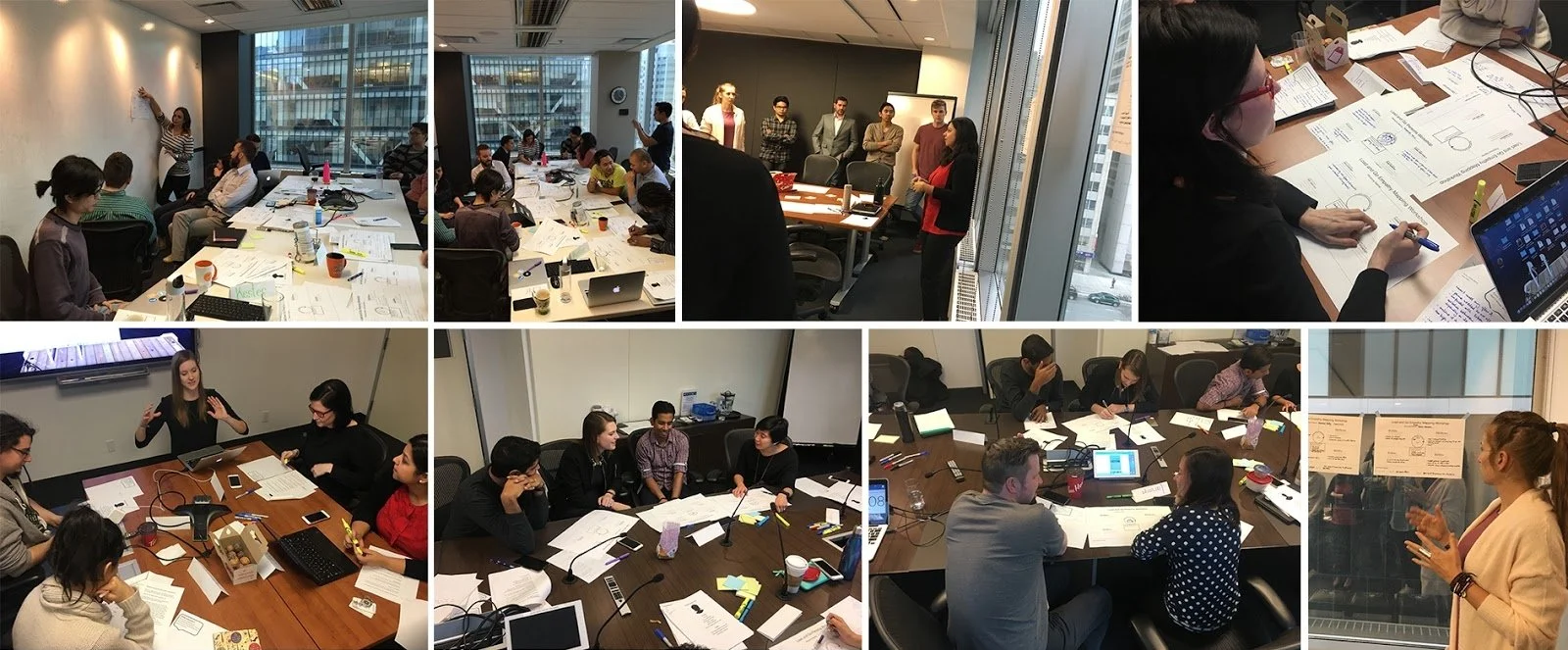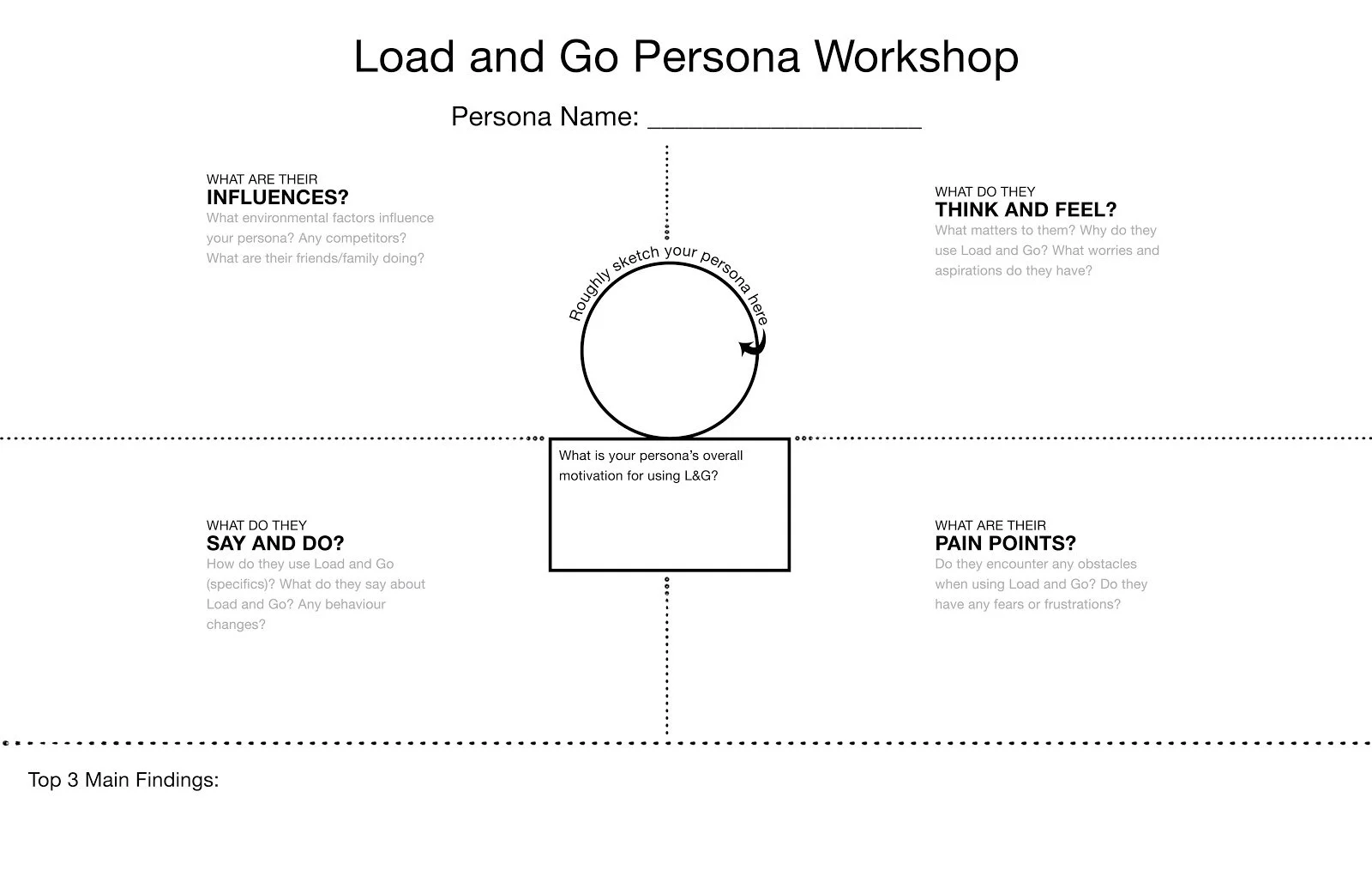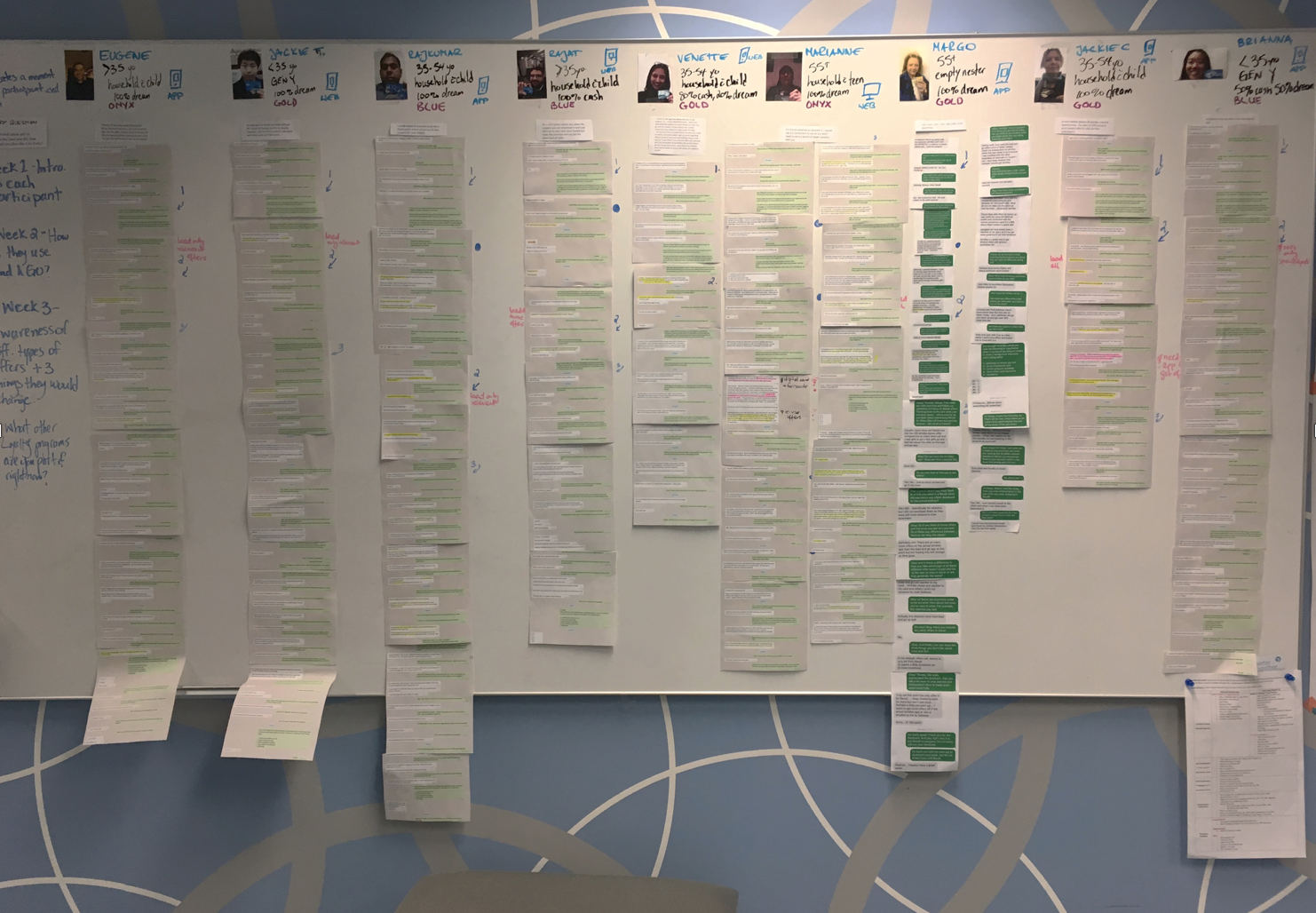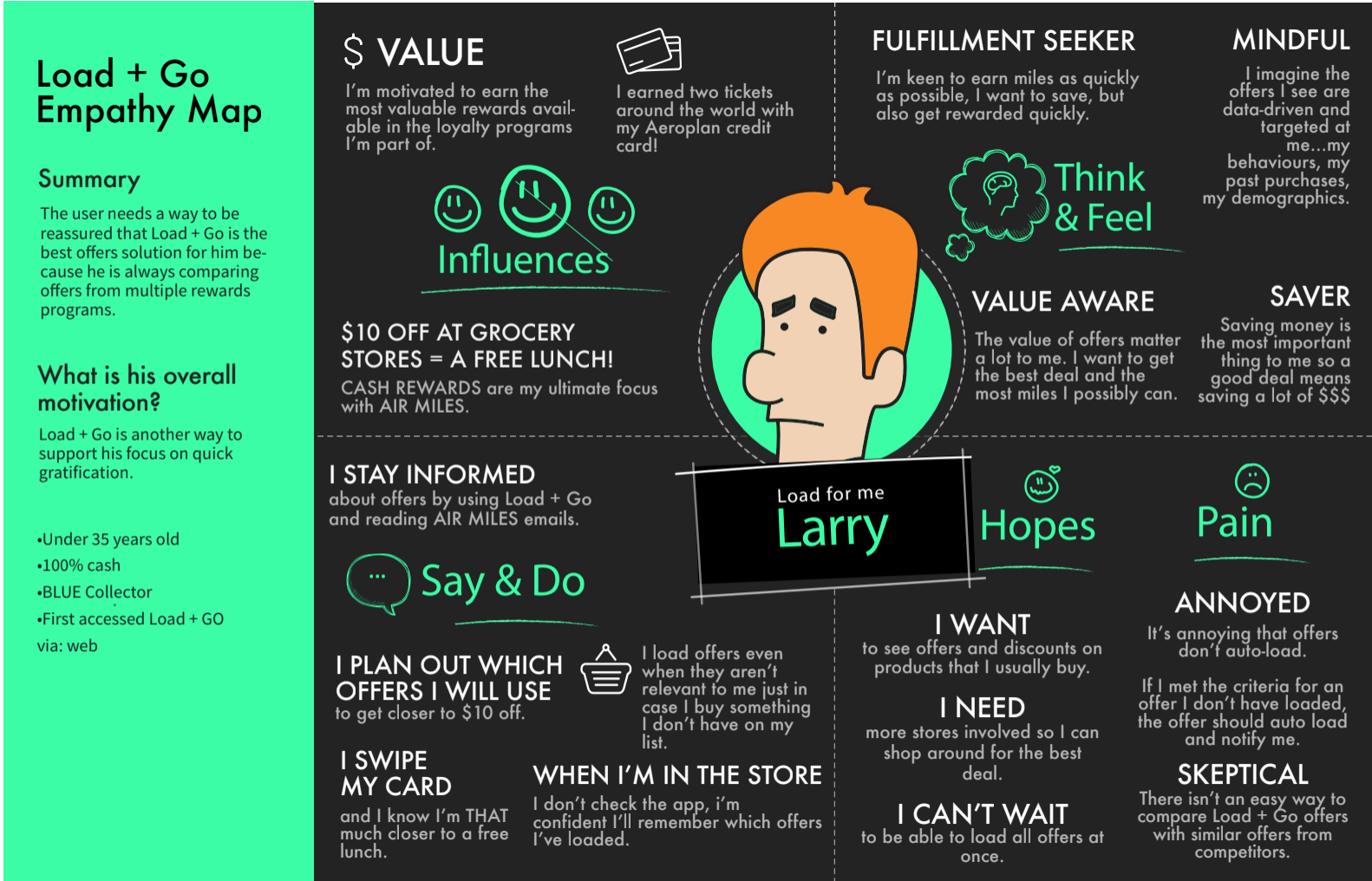New Loyalty App
Air Miles, 2016
Business Problem
During the process of building a new app for the AIR MILES program, there was a lot of uncertainty about who would be the target users for the app and how they would be incorporating the app experience into their day-to-day shopping habits. After speaking with business stakeholders, it was found that many assumptions regarding the wants of Collectors were being used to imagine the future of the app.
The app, currently available for ios and android, presents offers for miles from several partner companies that are available for Collectors.
Virtual Diary Study Conversations
Prior to this study, a new screener was sent out to refresh our UX Lab’s panel of participants. This allowed me to add in a few questions to better recruit for the study. For example, learning what devices Collectors use, their comfortability with those devices, and what they use it for in a typical day. This allowed me to recruit for participants that would have both access to the app and be a contender to use the app in the future rather than someone who may not have or use a smartphone. Once the study was approved, I used our panel to begin recruiting for the study.
I worked with a UX Designer on the mobile app project to develop an initial set of questions based on our goals for the study. The plan was to send one main question per week for 6 weeks and 1-3 follow-up questions per week to each participant using whatapp. The questions would begin generally, and then end with greater detail based on their experiences using the app.
The first week was the most challenging since more time had to be spent on helping participants setup whatsapp than expected. I ended up resorting to simple text messages with one participant since she was unsure how to use whatapp. Response times also varied between participants, so it was important to keep a detailed account of where each conversation was and what each Collector had said.
Results
Using the conversations from this study, I was able to paint a picture about how different types of Collectors would be using the new app. I analyzed the conversations and developed a findings report on what was learnt from the study. The findings, for example, revealed that some participants were extremely motivated to use the app as a way to earn more miles and reach a reward in mind, while others were using the app as more of a way to save money on future purchases. Some Collectors would use the app to plan their shopping every week, while others would look at it only when they were about to walk into a partner store. Some would open the app at work on their lunch break, while others would view it Sundays at home whilst meal planning for the week. There were even a couple of Collectors who didn’t find an opportunity to use the app at all during the study.
Empathy map templates
I chose these topics for the empathy map templates to encourage workshop participants to put themselves in the mindset of the participants.
Approach
To begin a larger study on understanding who would be using the app and why, I embarked on a virtual diary study. I developed a plan that would create a channel of communication between myself and up to 10 Collectors representing various demographics (inspired by target groups previously completed by the marketing research department) who would be given access to the Beta app.
These conversations were updated weekly with the responses participants were providing.
Sharing the learnings
Since there were many stakeholders involved in the project, and this was an incredible opportunity for a larger discussion, I organized a workshop to share the conversations I had with Collectors.
Over the course of 3 different workshops (15-20 people per workshop) with stakeholders from marketing, business, development, management, and creative, I was able to share the learnings of this study. During each workshop, stakeholders were partnered with someone from another department and asked to read 2 unique virtual diary study conversations. From those conversations, they discussed what they learnt and created an empathy map for each. Each pair joined another that had read the same conversations, and together they created a more refined empathy map for their 2 Collectors. This was presented to the workshop attendees and discussed.
I analyzed all empathy maps and grouped similar ones which resulted in 5 empathy personas. I distilled the findings and workshop discussions into these 5 personas that represented a snapshot of who could be using the new app. These were transformed into visual maps by a teammate (Bin Hur, UX/UI Designer) and presented to workshop attendees in the form of a showcase. Attendees were able to walk around the room and read each empathy persona and discuss these with each other.
These personas resulted in a better understanding of who would be using the app and a more informed way forward with the development and design of the experience. It also enabled conversations between stakeholders that didn’t typically speak to each other. Those working directly on the app really enjoyed putting themselves in the shoes of different Collectors who would be using the app.






